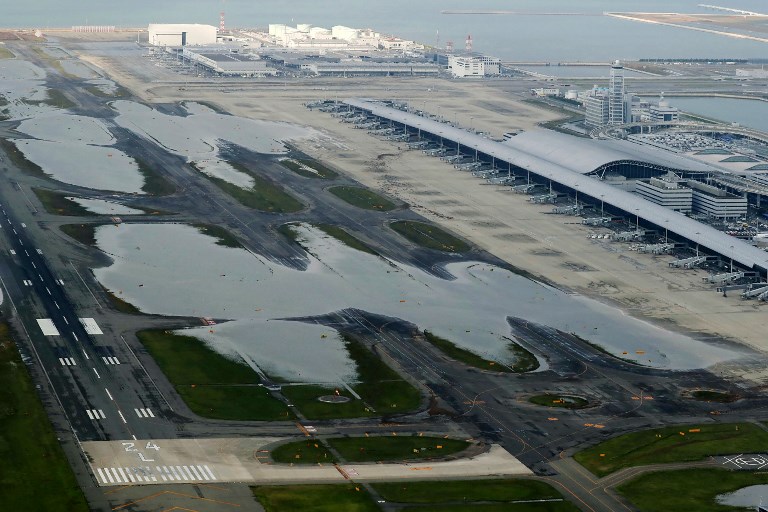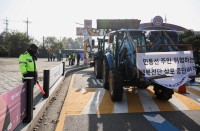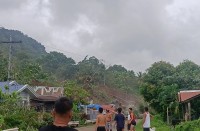
The toll in the most powerful typhoon to hit Japan in a quarter century rose on September 5 to nine, with thousands stranded at a major airport because of storm damage. / AFP PHOTO
by Anne BEADE
Agence France Presse
TOKYO, Japan (AFP) — Flooded runways, thousands of passengers stranded and a tanker smashing into an access bridge: last week’s typhoon in Japan highlighted the vulnerability of Kansai Airport which serves a region with an economy bigger than Belgium’s.
Because of concerns about engine noise, Kansai — located in the bay of Osaka — is the world’s first airport entirely situated on a huge man-made island, putting it at risk of flooding, tsunamis and typhoons.
Damage to the airport is seen having a dramatic knock-on effect on tourism and trade, as it handles 22 million international passengers per year and 5.3 trillion yen ($47 billion) of Japan’s exports — more than seven percent of the national total.
“The Osaka region which was hit by the typhoon is about 10.9 percent of Japan’s GDP. It’s slightly larger than Belgium and about the same as Sweden,” noted Kohei Iwahara, economist at Natixis Japan Securities.
“You have the ports affected, Kansai Airport malfunctioning and the question is: how long is it going to last?” asked the expert.
One week after Typhoon Jebi ravaged western Japan, the airport is still not fully functional, with power not yet completely restored and access via the damaged bridge still not back to normal.
It has operated fewer than 100 flights in total since last Tuesday’s typhoon, a far cry from the 400 per day it usually runs in its round-the-clock operation.
Kansai airport has been beset by setbacks from the beginning and has spent vast amounts on protection from the elements — such as high walls and waterproof barriers — which proved of limited value when the typhoon struck.
According to Mizuho Securities, the typhoon and an earthquake in the more rural island of Hokkaido has increased the danger of a cut in Japan’s GDP, which came in at 0.7 percent on-quarter in April-June.
The disasters cut supply lines and could result in a 0.2-percentage point dip in factory output in the third quarter, Mizuho said.
The 6.6-magnitude Hokkaido quake knocked out the main thermal power plant, causing a total blackout for the three million households on the island and havoc for logistics. The plant will not be fully up and running until at least November.
Car giant Toyota for example was forced to stop production in the whole country because it was not being supplied with parts from its factory in Hokkaido.
‘The damage is severe’
Yoshihisa Inada, from the Osaka-based Asia Pacific Institute of Research, noted that more than one in three of Japan’s 28 million foreign tourists passed through Kansai last year, en route to the popular destinations of Kyoto and Nara.
“Companies can choose alternative airports (for exports) but the problem is tourism,” he told AFP.
“If the situation at the airport continues for one month, the tourists can’t come and the value added will disappear, so how do I make money? The damage is severe,” he said.
Typhoon Jebi was just the latest in a series of natural disasters to afflict western Japan — after a deadly earthquake in Osaka in June and flooding in July that killed more than 200.
These events did spark “some cancellations and a negative impact on demand in the South Korean and Hong Kong market”, admitted Ryoko Hasegawa from the Japan National Tourism Organisation.
But Iwahara from Natixis said any effect on tourism should not last too long.
“Given the past record in Japan, earthquakes and typhoons are part of everyday life. So the impact should be short-lived and overcome in a month or two,” he told AFP.
Inada agreed, saying that foreign visitors should realise that Japan is “very resilient”.
“We have many natural disasters and recovery is very fast.”
© Agence France-Presse







